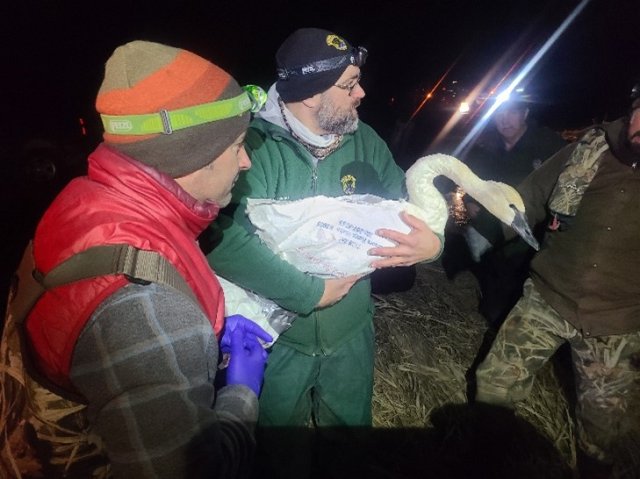EPA Researchers Monitor Contamination in the Coeur d’Alene River Basin by Measuring Swan Waste
Published June 22, 2022

For more than a hundred years, gold, silver, and other metals have been mined from one of the largest historical mining districts in the world – the Silver Valley, located in the Coeur d’Alene River basin in northern Idaho. Historical mining and milling practices included disposing of tailings, or smelter waste materials, in rivers and streams. As a result of these practices, soil, sediment, groundwater, and surface water became contaminated with heavy metals such as lead, zinc, and cadmium, posing serious health risks to people and the environment.
The massive site, also known as the Bunker Hill Mining & Metallurgical Complex Superfund Site, spans 1,500 square miles and 166 river miles. It was first added to the National Priorities List in 1983.
Since then, EPA and its partners have made great progress in cleaning up the contamination. In addition to cleaning up old mine and mill sites where tailings could enter the waterways, EPA has cleaned up thousands of residential yards, as well as roadways and recreational areas to protect human health. To address environmental health, EPA researchers support a site-wide environmental monitoring program that helps EPA project managers understand how the contaminant concentrations are changing and how sediment chemistry impacts metal solubility and bioavailability (the ability to be absorbed by the body) to people and wildlife. This information helps project managers select mitigation strategies.
As a part of this monitoring program, EPA scientists are working with Tribal, state, federal, and local partners on a collaborative effort to monitor a local migratory bird, the Tundra Swan. Tundra Swans feed on water potatoes, a natural growing wetland plant and an important food to the Coeur d’Alene Tribe, as well as other wetland vegetation. As swans dabble and forage in the water and sediment for aquatic plants, they ingest contaminated sediment with lead concentrations that can be 10 times greater than the concentration considered safe for waterfowl. Lead contamination poses a health risk to these swans. Many swans die every year and 2022 was an exceptionally high year for swan mortalities with over 300 documented.

Drawing blood from the swans is a massive undertaking requiring an extensive staff of scientists, veterinarians, and wildlife biologists to ensure that the swans are captured safely and have their blood drawn with minimal impact.
EPA researchers are developing a minimally invasive and easier method to ascertain lead exposure by collecting and analyzing swan fecal samples. Researchers are currently testing fecal samples and comparing the concentration present in the feces with the sediment present in the soil and the blood samples taken from the swans to determine if a correlation exists and establish a baseline. They hope to use this method to sample large areas more frequently, allowing them to learn more about the contamination levels in the river basin and monitor the ongoing clean-up effort.
Another benefit of gathering and sampling the swans’ waste is that it allows for a wider survey of the river basin which can be used to understand basin-wide trends.
While the swans are the focus of this study, the concern is not just for the swans, but other animals affected by heavy metals. Swans that are sick from consuming heavy metals are easier prey for other animals, such as eagles, and thus heavy metals enter the food chain. This study allows EPA scientists a view into the health of the ecosystem to protect human and animal health.
